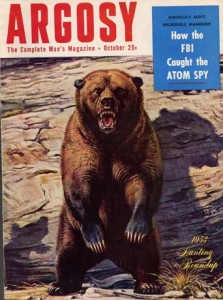
A few months ago, I completed what I think is a version of my novel March Bicycle Madness worth circulating. Since then, I have been settling down to the far more tedious process of writing the ancillary materials necessary to get it published: the hook, the query, and three different-lengthed synopses (500-, 1000-, and 1500- words, respectively, as different agents ask for different lengths).
The internet is rife with commentary about this part of writing: attacks on and defenses of it; advice, suggestions, and opportunities for feedback; offers to write or critique for so much per draft . . . You name it. But the bottom line is that if you want to interest an agent or a publisher in your work, and even if you decide to self-publish, you need to reduce your 100k-word novel into everything from a one-sentence hook to a 1,500-word synopsis.
For all of the sources of help, examples, and advice out there on how to write a synopsis, no one seems to mention Rick Wakeman, prog-rock keyboardist with Yes (as if you had to be told) and solo artist of a number of similarly classical (and classic) prog works. In 1974, Rick Wakeman set Jules Verne’s “Journey to the Centre of the Earth” to music, complete with rock band, orchestra, choir, and a wicker-chair ensconced narrator. Whatever else it may be, I think it’s a masterpiece of synopsis writing.
By one source, Verne’s novel is around 74k words. Wakeman’s version, including narration and song lyrics, weighs in at about 1,600 words. (You can see a full transcription here and another with a couple of pics here.)
The album starts with music. But the inside cover (yes, I still have the album) has the following, which acts as a prelude:
“The story begin on the 24th May 1863 in Hamburg when Professor Lindbrook and his nephew Alex discover an old parchment in a 12th century book called ‘Heims Kringla,’ a chronicle of the Norwegian princess who rule over Iceland. This parchment when decoded into Latin and translated by Alex proved to be written by an alchemist of the 16th century and read as follows:
‘Descend into the crater of Sneffels Yokul,
over which the shadow of Scattaris falls
before the Kalends of July, bold traveller,
and you will reach the centre of the earth.
I have done this.’ – Arne Saknussemm
Sneffels is a 5,000′ high mountain in Iceland, an extinct volcano, its last eruption having being in 1229.
And so the journey from Hamburg to Iceland begin.”
That’s 127 words. This liner note covers the first seven chapters of the novel. Hell, it took professor Lindenbrook and Axel five chapters (Ch 2-6) just to decipher Saknussemm’s Icelandic runes and translate them.
The distillation of the novel into a synopsis continues. The first line of the first song in the album (“By horse, by rail, by land, by sea our journey starts”) covers Chapter 8. And by the time the narration starts:
“Admiring shades of lava which imperceptibly passed from reddish brown to bright yellow, their way lit by crystals appearing as lighted globes, they continued through the lava gallery, which gently sloped until they reached the inter section of two roads.”
we’re into Chapter 19 of the book.
What Wakeman has done, of course, is to cut away all the back story, the side story, the internal dialogue of the narrator (Axel, who keeps referring to his fiancé with the annoying phrase, “my Virland girl”), the wonderful, but less important details (such as the three-day journey from Reykjavik to the base of Snaeffels), and just went straight to the action. The first thing that happens is that Axel gets separated from the Professor and their guide.
It makes for a compelling story. And with rock band, orchestra, choir, and narrator, it’s quite a production. Now, if I could just find the hook and query equivalents.


